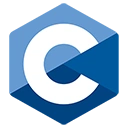Introduction
C programming plays a critical role in the healthcare sector, particularly in the development of medical devices. In this guide, we'll explore how C is used in healthcare, delve into key concepts, and provide sample code to illustrate its applications in medical device development.
Prerequisites
Before diving into C programming in healthcare for medical devices, ensure you have the following prerequisites:
- C Programming Knowledge: A solid understanding of C programming, including memory management and real-time processing, is essential.
- Medical Device Understanding: Familiarity with medical device concepts and regulations is crucial, as safety and reliability are paramount.
- Embedded Systems: Knowledge of embedded systems, microcontrollers, and sensors is valuable for medical device development.
Key Concepts in Medical Device Development
Before we proceed, let's briefly explore key concepts in C programming within the healthcare industry, especially for medical device development:
- Embedded Systems: C is used for programming embedded systems in medical devices, controlling functions like patient monitoring, diagnostics, and drug delivery.
- Real-Time Processing: Real-time software written in C is essential for tasks like data acquisition, processing, and response in medical devices.
- Regulatory Compliance: Medical device software must meet stringent regulatory standards, and C allows for fine-grained control for safety and reliability.
- Data Security: C programming is crucial for implementing data encryption and security measures to protect patient data in medical devices.
Sample Code - Patient Monitoring
Let's look at a simplified example of C code for patient monitoring, a common application in medical devices:
#include <stdio.h>
#include <stdint.h>
// Sample code for patient monitoring
void monitor_patient_vitals() {
// Your code for patient monitoring goes here
}
int main() {
monitor_patient_vitals();
printf("Patient vitals monitored.\n");
return 0;
}
This code provides a basic framework for patient monitoring in a medical device. In practice, it would be part of a larger, safety-critical software system with specialized hardware interfaces and compliance with regulatory requirements.
Exploring Further
Using C for medical device development in healthcare offers various opportunities for exploration:
- Development of life-critical medical devices such as insulin pumps, ventilators, and defibrillators.
- Implementation of advanced algorithms for diagnostics and patient data analysis.
- Integration of wireless communication for remote monitoring and data transmission.
- Adherence to industry standards and regulations, including FDA guidelines for medical device software.
Conclusion
C programming is a crucial part of healthcare, ensuring the functionality, safety, and reliability of medical devices. This guide introduced the basics of C programming in the healthcare sector, provided a sample code for patient monitoring, and outlined prerequisites for professionals entering this field. Delve deeper to contribute to the advancement of medical technology and patient care.

